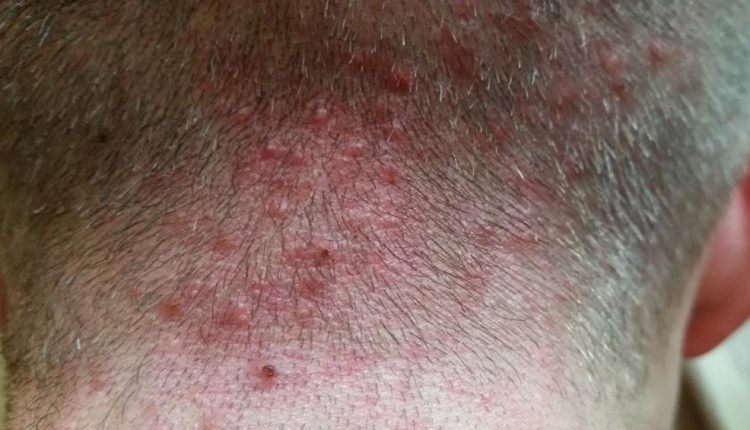
Skin: what to do in case of folliculitis?
Folliculitis is an inflammation of the hair follicles, often promoted by retained hair (ingrown hairs), for example in areas of the skin that are particularly irritated by hair removal, often associated with the proliferation of bacteria such as staphylococcus aureus and other pathogenic microorganisms such as viruses and fungi
Most of the time, it can be resolved without medical intervention and a few simple steps are enough to take care of one’s skin in the most appropriate way.
Folliculitis: symptoms and risk factors
It is visible to the naked eye: inflammation of the hair follicles causes an erythema (reddening of the skin) around the follicle and, centrally to the follicle, where the hair visually stands, a pustule.
Overinfection caused mostly by the most common bacterial species, such as staphylococci or streptococci, is responsible.
The most common risk factors predisposing to folliculitis are well known and can be corrected and avoided
For example, skin friction caused by shaving or epilation can favour the formation of microtrauma that acts as a gateway for possible bacterial proliferation; hyperhidrosis or clothing that is too tight and non-breathable (e.g. synthetic materials) are themselves risk factors for skin irritation and consequent folliculitis.
It is therefore often advisable to wear comfortable, cotton clothes.
How is folliculitis treated?
When we see a pustule, our first instinct is to squeeze it to help expel the pus, but this is wrong because it could worsen the infection.
To aid resolution, it is necessary to cleanse with soaps and non-foaming products, drying the cleansed body area thoroughly.
The dermatologist specialist may deem it appropriate to prescribe topical or oral antibiotic/anti-fungal therapies, so it is always best to have a check-up with a dermatologist specialist who will make a diagnosis and, having identified personal risk factors, prescribe an appropriate therapy.
Read Also:
Emergency Live Even More…Live: Download The New Free App Of Your Newspaper For IOS And Android
Epidermolysis Bullosa And Skin Cancers: Diagnosis And Treatment
SkinNeutrAll®: Checkmate For Skin-Damaging And Flammable Substances
Healing Wounds And Perfusion Oximeter, New Skin-Like Sensor Can Map Blood-Oxygen Levels
Psoriasis, An Ageless Skin Disease
Psoriasis: It Gets Worse In Winter, But It’s Not Just The Cold That’s To Blame
Childhood Psoriasis: What It Is, What The Symptoms Are And How To Treat It
Topical Treatments For Psoriasis: Recommended Over-The-Counter And Prescription Options



